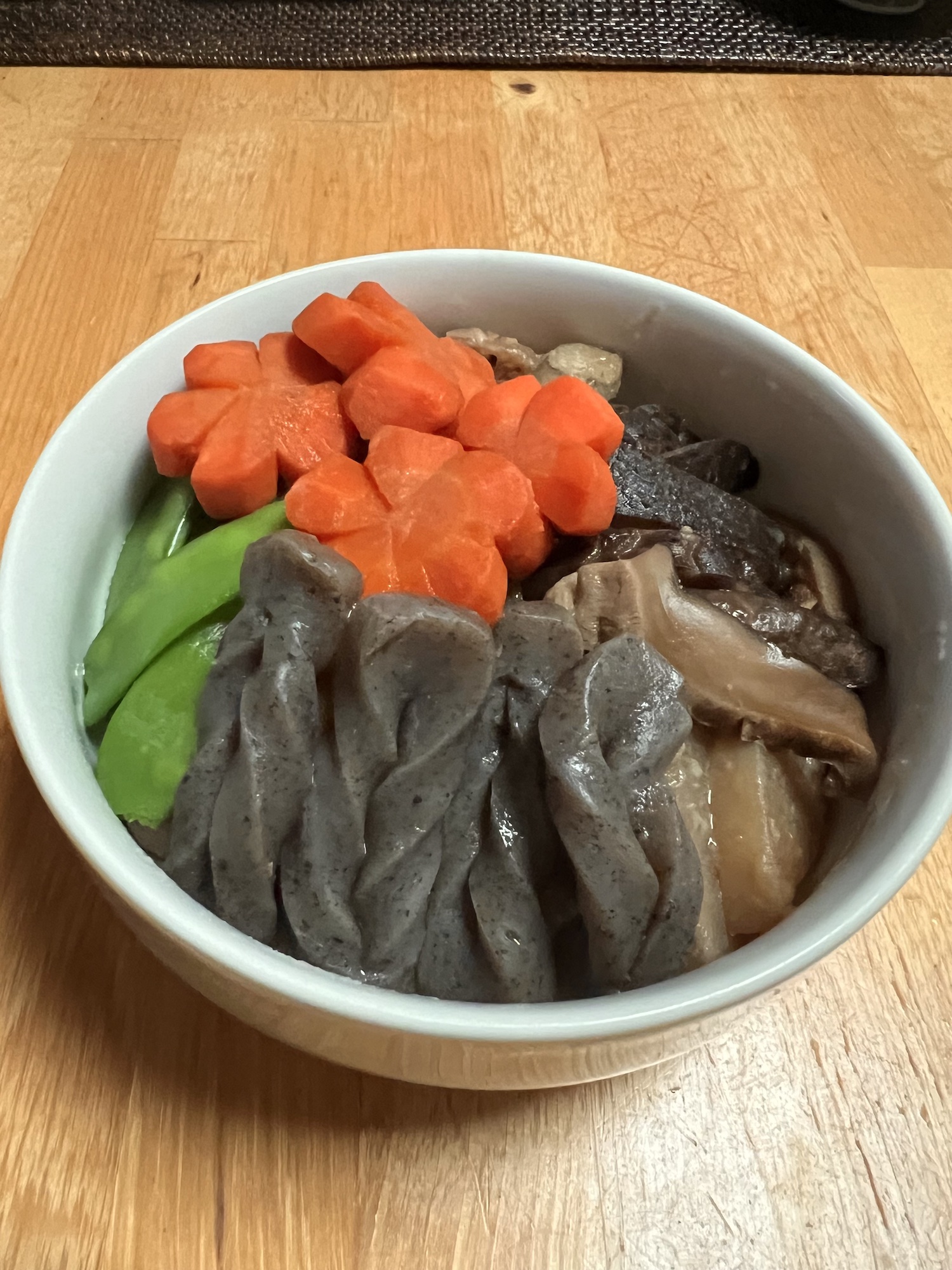Contents
recipes
Recipes, mostly vegetarian, borrowed or stolen.
Aloo Gobi (Cauliflower with Potatoes)
serves 6
ingredients
- 1 cauliflower
- 2 red potatoes
- a chunk of ginger (the size of a garlic clove)
- 1 tsp cumin seeds
- 1/4 tsp hing
- 1/2 tsp turmeric
- 2 tsp coriander power
- 1 tsp red chili power
- 1/2 tsp garam masa
- 2 tsp salt
- 2 tbsp semase oil
- some cilantro/coriander leaves
steps
- chop the cauliflower in half, break off the florets by hand, and cut big ones into a bite size.
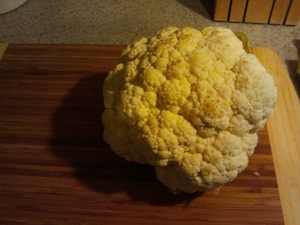
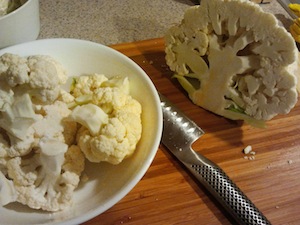
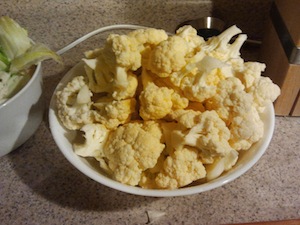
- removes the eyes from the potatoes, cut them into a 1 cm cube (1/2 inch) with the skin on.
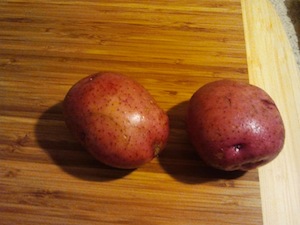
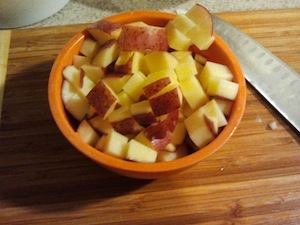
- peel and grate the ginger.
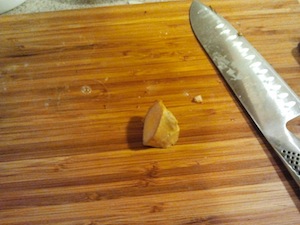
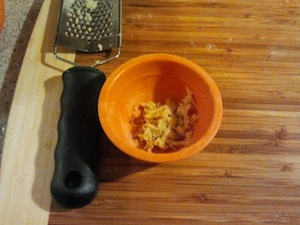
- heat semase oil in a pot with a thick bottom, and add cumin seeds.



- add hing and grated ginger, and mix well.
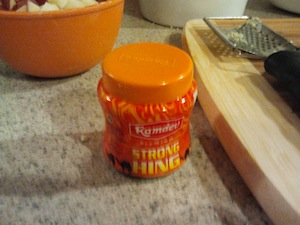
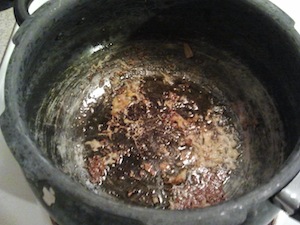
- add turmeric, coriander, and red chili poweder and stir.
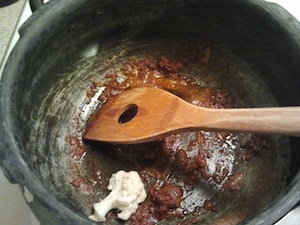
- lower the heat to medium low, add cauliflower, potatoes, salt, and mix well.
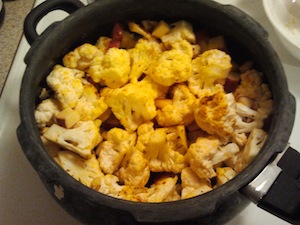
- cover and cook for 7 min, shake vigorously with the cover on (or stir), and cook another 7 min.

- sprinkle garam masala, stir, cover, and cook for additional 5 min.
- serve with chopped cilantro.

notes
this recipe is taken from Sookhi Gobhi Aloo.
Vegetarian Mapo Doufu
serves 4
ingredients
- 4 scallions
- 2 cloves of garlic
- a chunk of ginger
- 1 cube of vegetable bouillon with 2 cups of water (or 2 cups of veg stock)
- 1 tbsp of tianmianjiang (sweetened soybean paste) or hoisin sauce
- 1 tbsp of sake
- 1 tsp of soy sauce
- 1 tbsp of doubanjiang (chili bean paste)
- 2 dried red chilies
- 2 tbsp of huajiao (sichuan pepper)
- 2 packs of silken tofu
- 1 pack (340 g) of vegetarian ground meat such as Smart Ground
- vegetable oil
- 2 tbsp of corn starch
- sesame oil
steps
- finely chop the scallions.
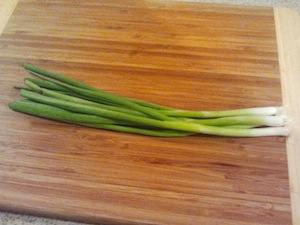

- peel garlic, equivalent amount of ginger, and grate them both.

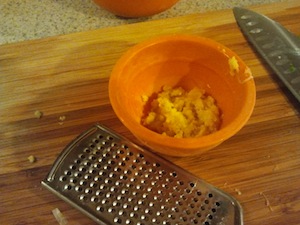
- microwave water with the vegetable bouillon for 2 minutes, and crush the bouillon.
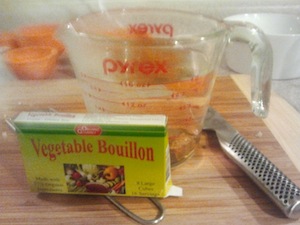
- add tianmianjiang, sake, and soy sauce to the soup base.
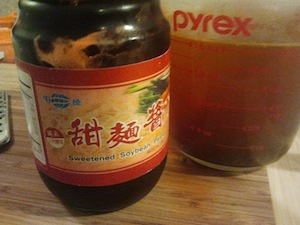
- set aside doubanjiang in a small bowl.
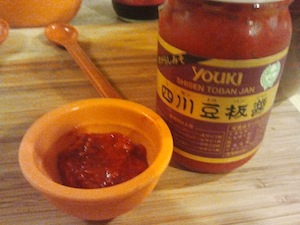
- finely chop red chilies into rings.
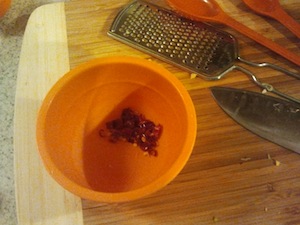
- grind huajiao using mortar and pestle.
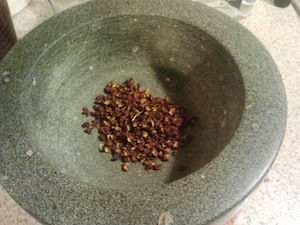

- open Smart Ground from the package, and cut it half.

- open silken tofu packages, drain excess water, and cut them into 3 cm (1.2 inch) cubes.
- heat a wok on medium high, add vegetable oil, and fry grated ginger, garlic and half of the scallions.
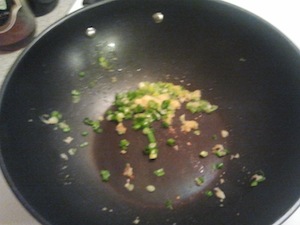
- once you start smelling the garlic (30 sec), make some room in the wok, and add in doubanjiang.
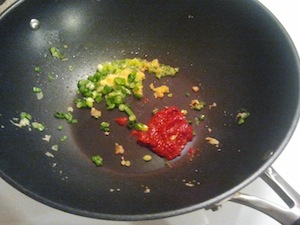
- let doubanjiang cook till the bottom changes color and sticks to the wok. (about 1 min) using ladle or spatula scrape the paste off the wok.
- add Smart Ground to the wok, crush them into pieces, mix well, and let it cook until the bottom part is crisply browned.

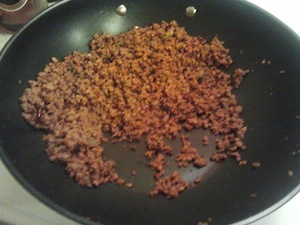
- add soup base to the wok, mix well, and bring it to a boil.
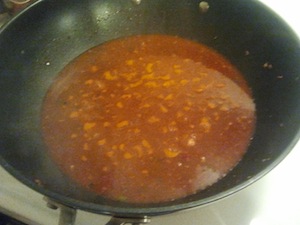
- carefully slide in the tofu, gently mix them so they are covered in soup, drop the heat to medium low, and stew for 2 minutes.
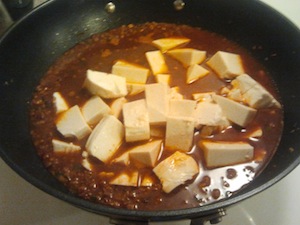
- while tofu is cooking, mix cornstarch with equivalent amount of water, mix well and set aside.
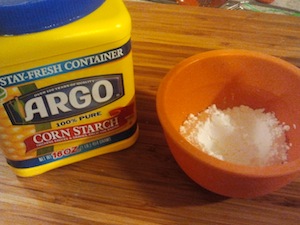
- remove the tofu from heat, pour the cornstarch all around, and quickly mix it in.
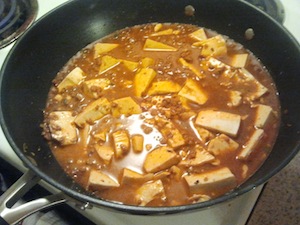
- put the tofu on high heat till the soup comes to a simmer and thickens.
- turn off the heat, and drizzle sesame oil all around.
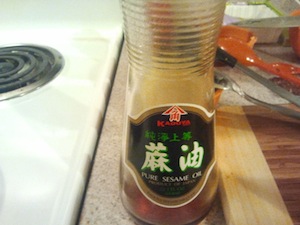
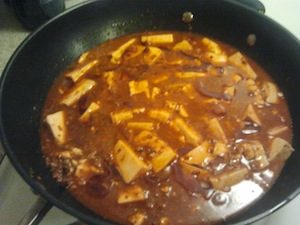
- serve with the other half of the scallion and ground huajiao.

notes
getting the ingredients may be challenging for some of you. most of them should be available online or at a local specialty store or a super market:
- The Organic Gourmet Low Sodium Vegetable Bouillon Cubes - 8 Cubes
- Ming Teh Sweetened Soybean Paste
- Lee Kum Kee Hoisin Sauce
- Gekkeikan Sake NV 750ml
- Kikkoman Naturally Brewed Less Sodium Soy Sauce
- Shisen Toban Jan
- Lee Kum Kee Chili Bean Sauce (Toban Djan)
- Szechuan Peppercorns
- Lite Silken Tofu
- Smart Ground Original
- Kadoya Brand Sesame Oil 11 Oz.
Meatless meat sauce
serves 6?
ingredients
- 2 large or 3 small vidalia onions
- 3 cloves of garlic crushed and chopped
- 1 can of Cento San Marzano Peeled Tomatoes
- 1 can of Cento Tomato Paste 6oz
- 1 pack of Lightlife Smart Ground Original
- 2 tbsp of aged balsamic vineger
- 1 cup of water
- 1/4 cup of olive oil
- red chili flakes to taste
- 2 pinches of salt
- (pasta of your choice)
- (1 cup greek yogurt)
- (parmesan cheese)
steps
- start boiling water (not listed) for pasta.
- cut the onions in half, and then slice them.
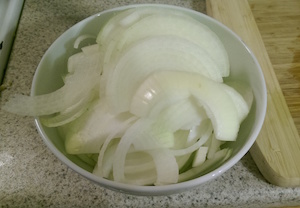
- in a large pot or Dutch oven, fry the onion with the olive oil until translucent. about 4 min.
- add chopped garlic and Smart Ground crumbled with spatula into the pot, and mix well.
- add balsamic vineger, salt and chili flakes and sauté them for a minute.

- empty the whole tomato into a bowl, and crush them by hand into bite size chunks.
- add the crushed tomato with juice and tomato paste into the pot and mix well.
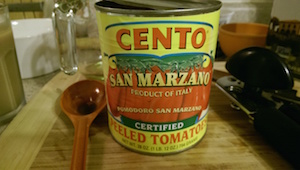
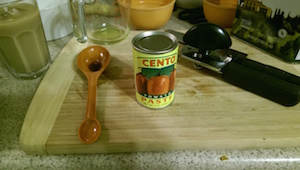
- add water into the pot and mix well.


- cook the sauce in medium heat for 7 minutes, stiring frequently.
- follow the instruction to cook the pasta in plenty of water with a handful of sea salt.
I cooked stuffed shells, stuffed them with 1 tsp of greek yogurt each, and poured the sauce over.


Sauteed water spinach
serves 2
ingredients
- 1 bunch of water spinach (kongxincai), cut into 3 inches (8cm)
- 1 clove of garlic, finely chopped
- 1/2 tsp red chili, cut in rings
- 1 tbsp vegetarian oyster sauce
- 1 tsp sugar
- 2 tbsp sake
- sesame
- sesame oil
steps
water spinach (kongxincai) grows in muddy water, and is delicate to cold temperature of the fridge.
wash well after cutting it into smaller pieces. throw out any damaged stems or leaves.

- mix sugar and vegetarian oyster sauce in a small bowl.
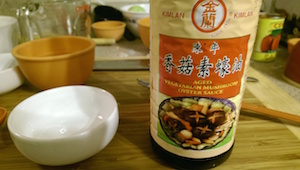
- heat the wok, and put enough sesame oil to cover the surface.
- fry garlic in the wok.

- put in the stem part of the water spinach with red chili, and stir fry for a minute on medium-high heat.
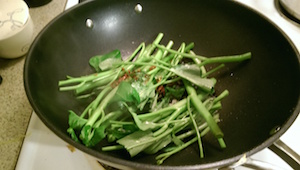
- put the rest of the water spinach. mix well to coat in oil.
- put in sake, and increase the heat to cook off the alcohol.
- put in the oyster sauce and mix.
- serve with sesame on top.

Holiday Brussel sprouts salad
serves 10+
ingredients
- 1 bag of fresh Brussel sprouts, 400g
- 1/2 bag of purple Brussel sprouts, 200g
- 1 bag Trader Joe’s Cruciferous Crunch Collection, 280g, or
- 1/4 head of small cabbage
- 1/4 head of small purple cabbage
- handful of kale
- 280g of mushroom, sliced
- 1 Honeycrisp apple
- handful of dried cranberries
- 1/2 lemon
- handful of roasted and salted pecan halves
- salt and pepper to taste
dressing
- 2/3 cups of olive oil
- 6 tbsp cider vinegar
- 4 tbsp maple butter or honey
- 3 tsp whole grain mustard
steps
- wash and shred both green and purple Brussel sprouts (with Mandoline or knife), and put them in a large pot with cold water
- wash, remove any stems or veins from the cabbage and kale leaves, shred them, and put them in cold water as well
- drain the water, and dry (using a salad spinner etc)
- microwave the maple butter (or honey) with 1 tbsp of water until warm, about 10s
- mix olive oil, vinegar, mustard, and warmed maple butter in a jar or measuring cup and stir well with a fork
- put the sprouts mix 1/3 at a time into a large pot with liberal amount of salt and pepper
- pour the dressing over the sprouts mix, and mix evenly
- cover the sprouts with a lid or plastic wrap, and let it stand in the fridge for 1h ~ overnight. take it out 1h before serving.
- saute the mushroom with salt and pepper, and mix with the salad
- dice the apple, and squeeze 1/2 of lemon juice over it in a bowl, then mix it into the salad
- serve the salad in a large salad bowl, and garnish with dried cranberries and pecan
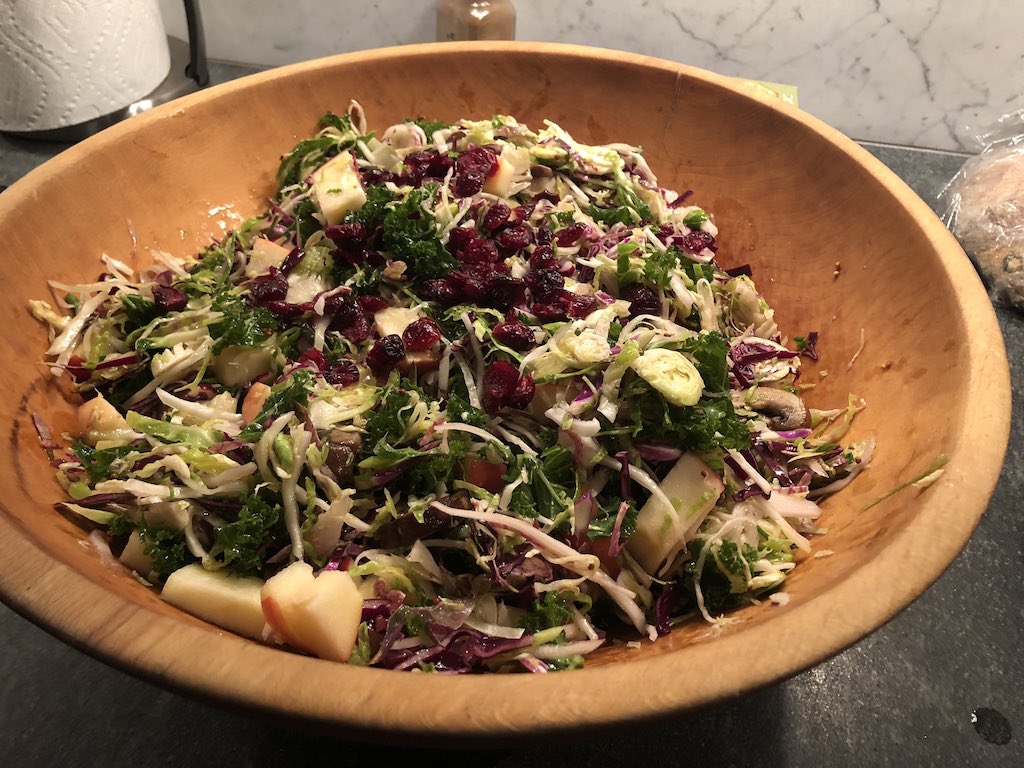
Bianlu plant-based hotpot
serves 4?
ingredients
- 1 head of napa cabbage
- 100 ml of semame oil
- 5 dried shiitake
- some dried kombu kelp
- 160g vermicelli bean thread
- frozen meatless meatballs
- kosher salt
- chili oil, chili oil with fried garlic, or chili powder
- (optional) cooked white rice
steps
- put cold water in a large dutch oven with 5 dried shiitake and similar amount of dried kombu kelp. let it sit for a few hours covered.

- after broth is done, remove the kombu kelp, and pour 1 liter into another pot to set aside for reserve.
- split the cabbage length-wise in half, then cut each cross-wise in half. then julienne the lower halves into thin strips and put them in the dutch oven.
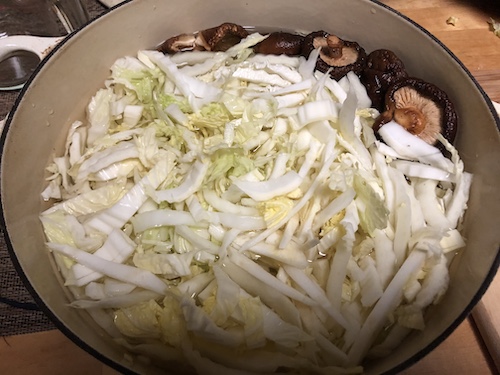
- stew the lower halves of cabbage on for 30 min, half covered. start with medium heat and then simmer.
- in the meantime, roughly chop the leafy part of cabbage into big chunks.
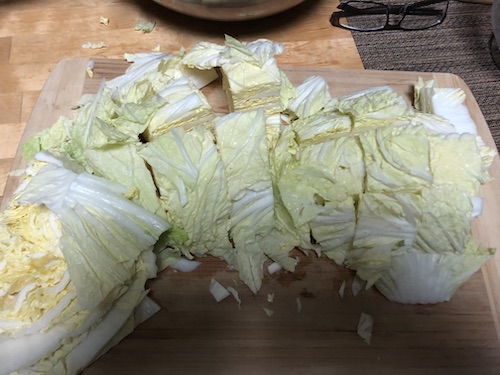
- add 50ml (~1 ladle) of semame oil and stack the leafy part of the cabbage and simmer for 20 min.
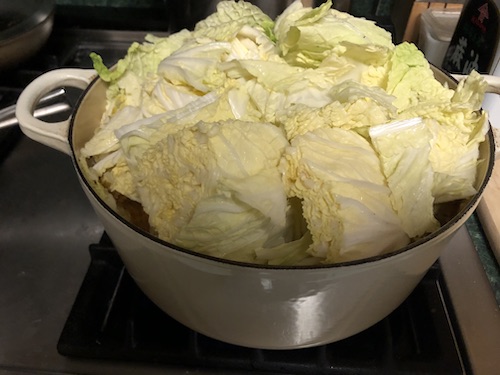
- the leafy part should’ve shrunk by now. add another 50ml (~1 ladle) of semame oil, mix well, and simmer for 10 min.
- meanwhile, microwave the frozen meatless meatballs.
- boil hot water separaly, and soak 4 servings (160g) of vermicelli in a bowl or wok for 5 minutes. drain well and add vermicelli to the cabbage. the hot pot is ready to serve.

how to enjoy bianlu
Serve the stew with meatballs, unseasoned with chili oil and kosher salt on the side.

Add just the salt first and enjoy the cabbage. Don’t finish the soup part since it’s a constrained resource.
In the second serving onwards, add chili oil and maybe you can even have some of the soup. If the common soup starts to deplete, you should have the national broth reserve that we’ve set aside. Reheat it and add to the pot.
In the final serving, add some cooked rice (either individually or in the common pot) to make porrige.
about bianlu
扁炉 (bianlu or “pienlo”) is supposedly from Guangxi region in China, and has a cult following in Japan after it was introduced in a book by Kappa Senoh in the 90s. This recipe is based on an adoptation by Oi-san.
Vegan dashi
Part of vegan osechi 2024.
ingredients for kombu dashi
- 3500ml of cold water
- 35g of dried kombu kelp (or 1% of water)
(optional) ingredients for dried shiitake dashi
- 750ml of cold water
- 6 dried shiitake (about 38g)
steps for kombu dashi
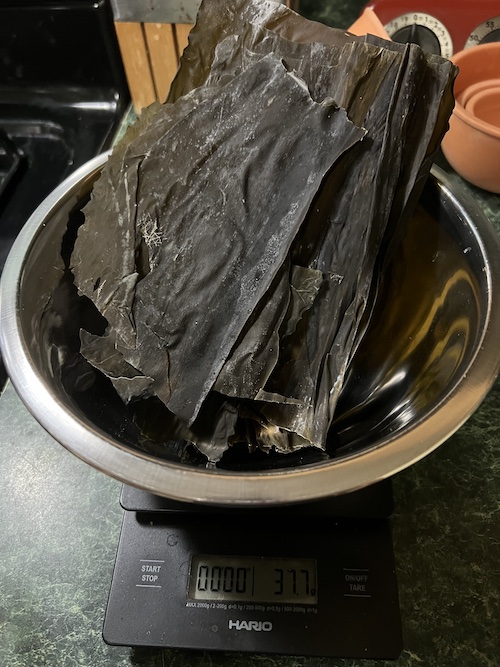
- pour cold water into a large pot.
- remove kombu parts that has other plants stuck to them, and add the rest to the pot in cold water.
- let it sit at room temperature for 30 minutes.
- heat the water at low heat for 20 minutes, targeting 60C or 140F.
- stop the heat, let it cool, pour it into a thermos or a jug with kombu, and store refrigerated if you’re not using in a day.
steps for dried shiitake dashi
- pour cold water into an air-tight container or a jar.
- add dried shiitake.
- let it sit overnight refrigerated, if you’re not using it in a day.
notes on kombu vs shiitake
Kombu dashi contains glutamates (glutamic acid), and is the basis of umami, savoriness. Dried shiitake dashi contains guanylate (guanylic acid), which supposedly enhances the umami receptor by 30x. Although shiitake dashi it tasty, it’s overpowering so you should use less if you want kombu flavor to come forward in a soup, and more for stew that will be flavored by soy sauce, sugar (mirin is sugar) etc anyway.
Vegan soba
serves 2
Part of vegan osechi 2024.
ingredients
soup:
- 600ml vegan dashi (500ml kombu + 100ml shiitake)
- 50ml soy sauce
- 20ml mirin
- salt to taste
soba:
- 2 servings of dried soba
toppings:
- a few boiled fernbrake, cut bite size (optional)
- daikon grated (optional)
- shichimi togarashi
- 1 scallions, thinly chopped
- 2 abura-age (fried tofu, optional)
- boiling water
steps
- put fernbrake and abura-age in a metal bowl, and pour boiling water to remove the oil falvor. throw out the water after 1 min, and pat dry.
- cook soba noodles following the instruction. (e.g. boil for 4 mininutes, and rinse under cold water)
- in a small pot, add vegan dashi, soy sauce, mirin, and salt to taste.
- bring the soup to a boil, and quickly stop the heat.
- serve noodle in a bowl, then pour soup, and add other toppings to taste.
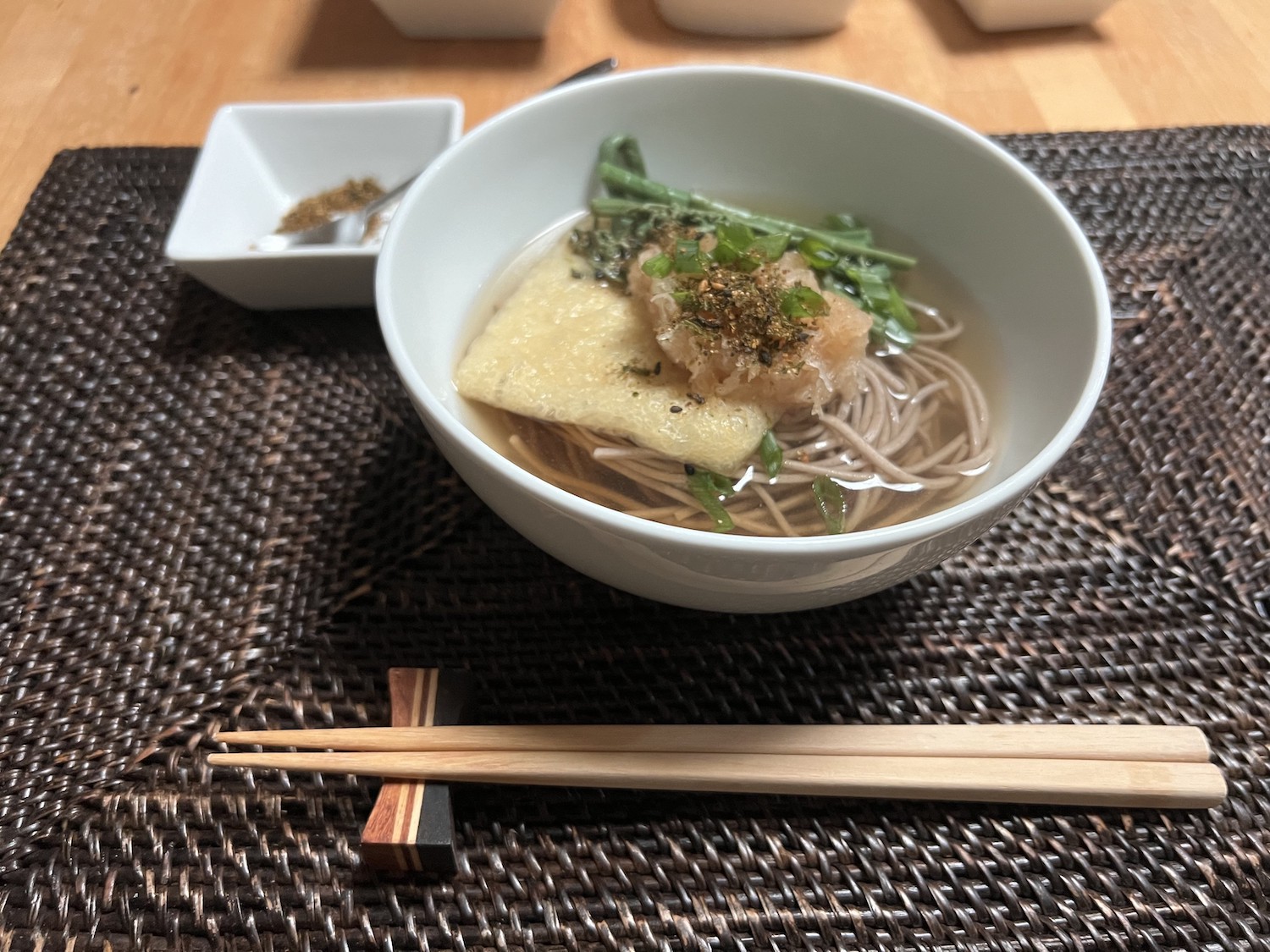
Nejiri ume: Plum blossom carrots
Nejiri ume means a twisted plum blossom. Part of vegan osechi 2024.
ingredients
- large carrots (2 for osechi for 2)
steps
It goes fater if you go through the whole batch for each step.
- Peel and cut carrots into 1cm (0.4 inch) thickness.
- Using a template make 5 incisions, equally apart, 5mm deep.
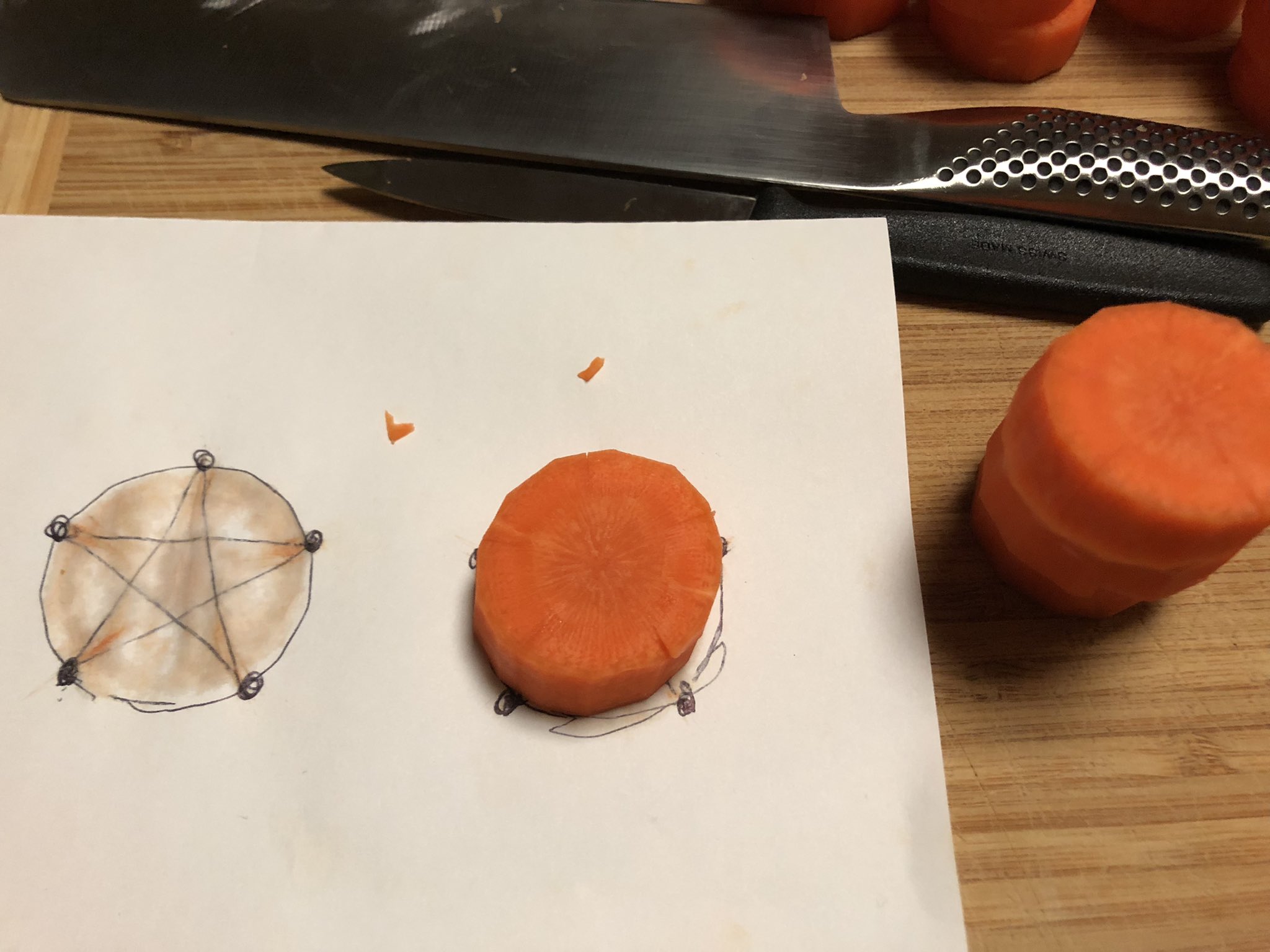
- Make a v-shaped wedge around each incision.
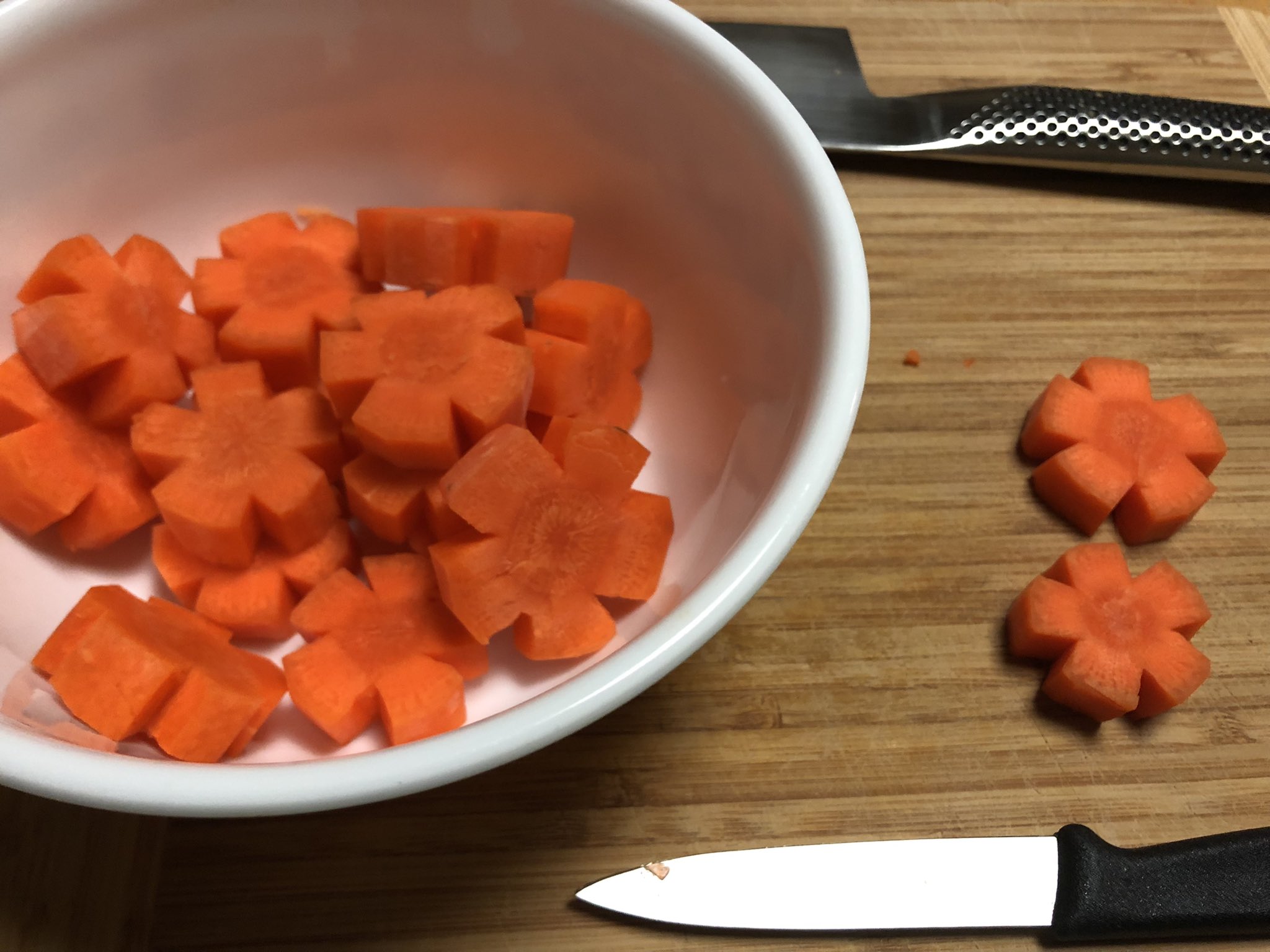
- Round out the edges.

- Make 30° incision from the wedge to the center.
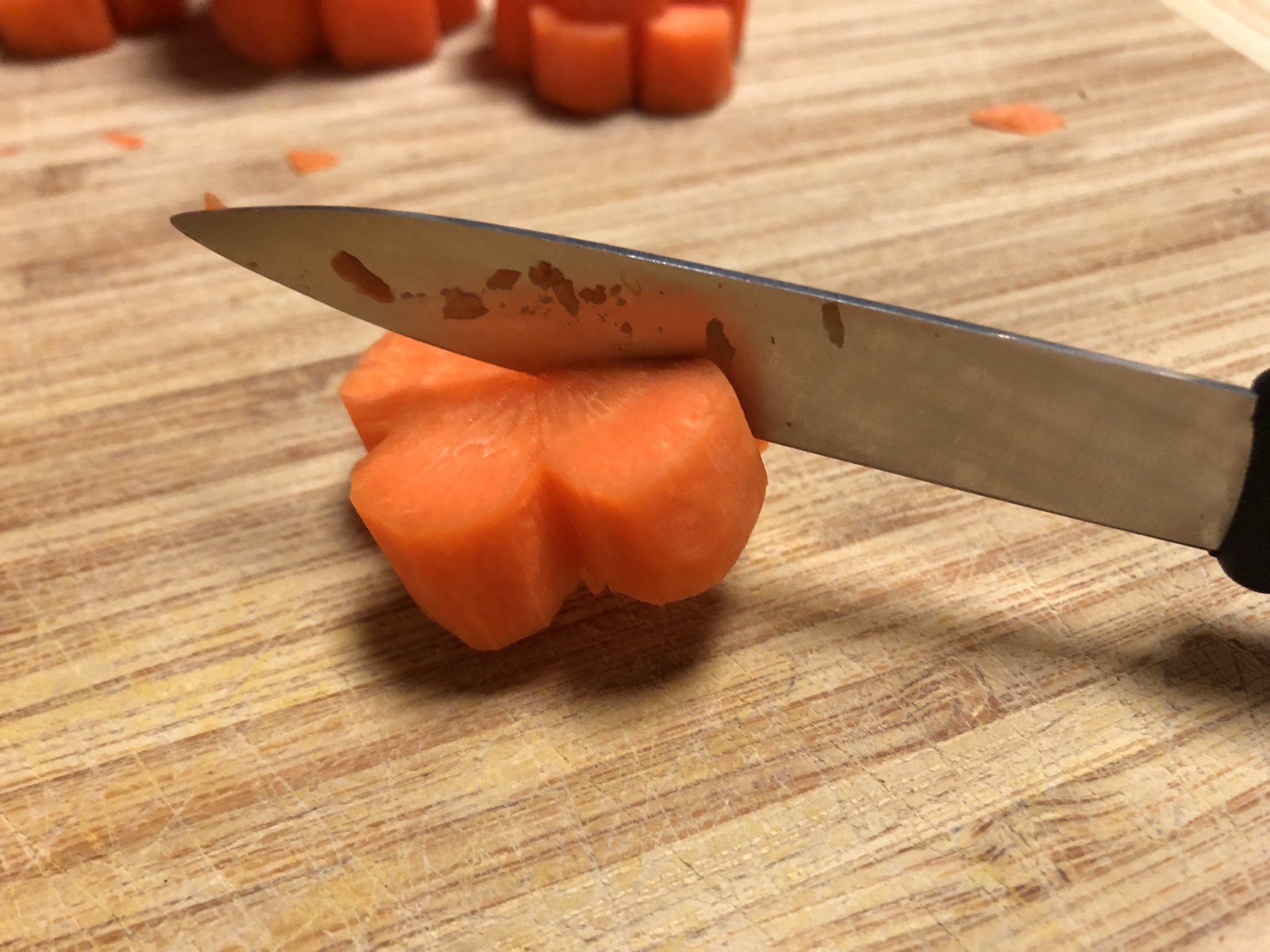
- From the midline of each petal make a slant cut towards the other cut.
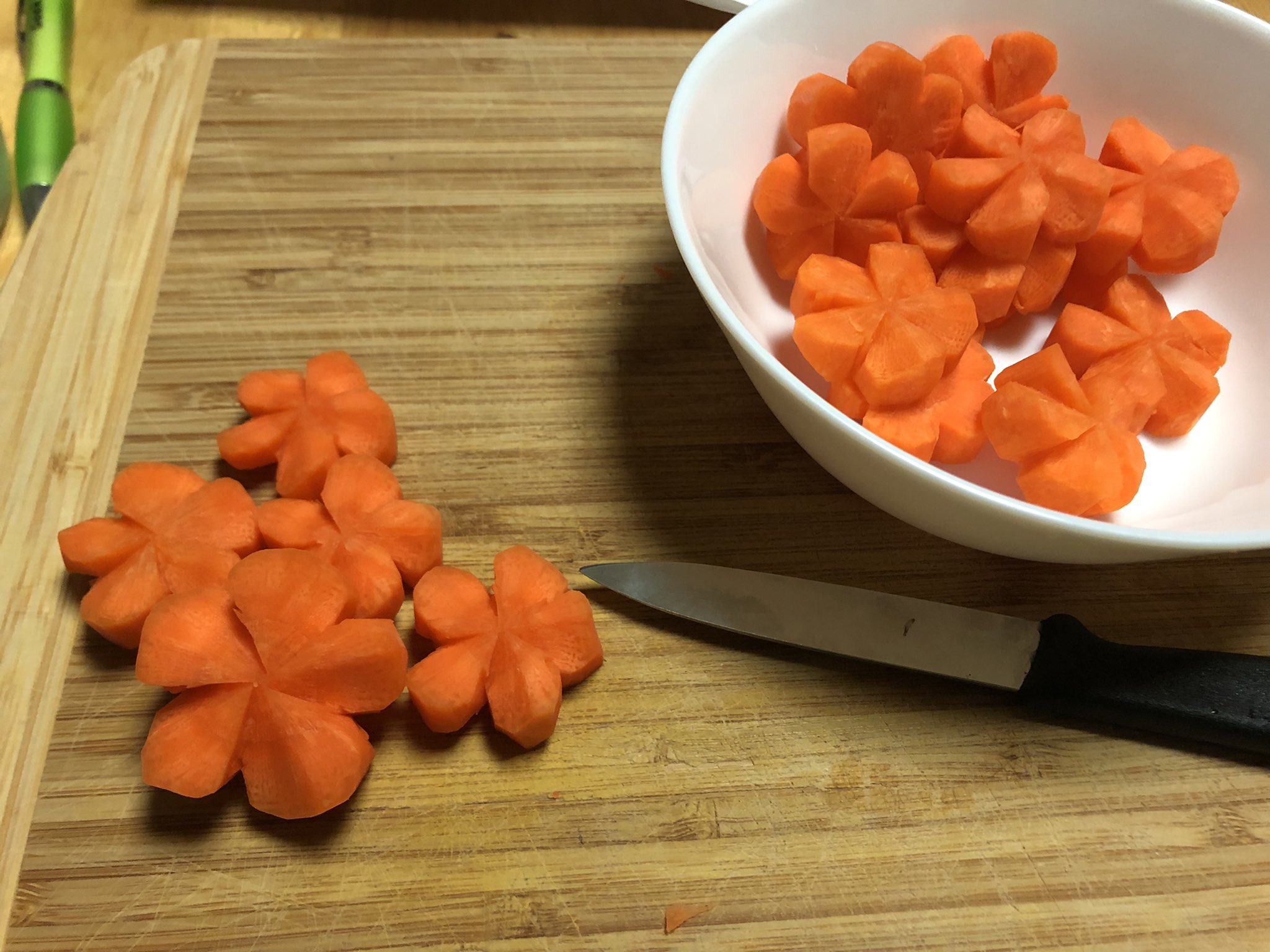
notes
This is a traditional cutting technique, but the credit for the steps goes to https://cookpad.com/recipe/1531299, originally written in Japanese.
The cultural significance of plum blossom is that it’s often the first flower to bloom in the middle of winter. Thus in China it has symbolized the arrival of hope and spring. The tradition of admiring the blossom was ported to Japan, but cherry blossom became more popular later on.
Kimpira gobo (spicy burdock)
Part of vegan osechi 2024.
ingredients
- 1 burdock, about 200g
- 1 large carrot, about 200g
- ¼tsp dried red chili rings
- white sesames
- sesame oil
- 50 ml water
sauce A
- 1½ tbsp soy sauce
- 1½ tbsp mirin
- 1½ tbsp sake
- 2 tbsp maple syrup
steps
- Peel the burdock and carrots. Julienne them into matchstick size. Soak burdock in water (separate).
- Drain, and pat them dry.
- In frying pan fry the vegetables with sesame oil and red chilli.
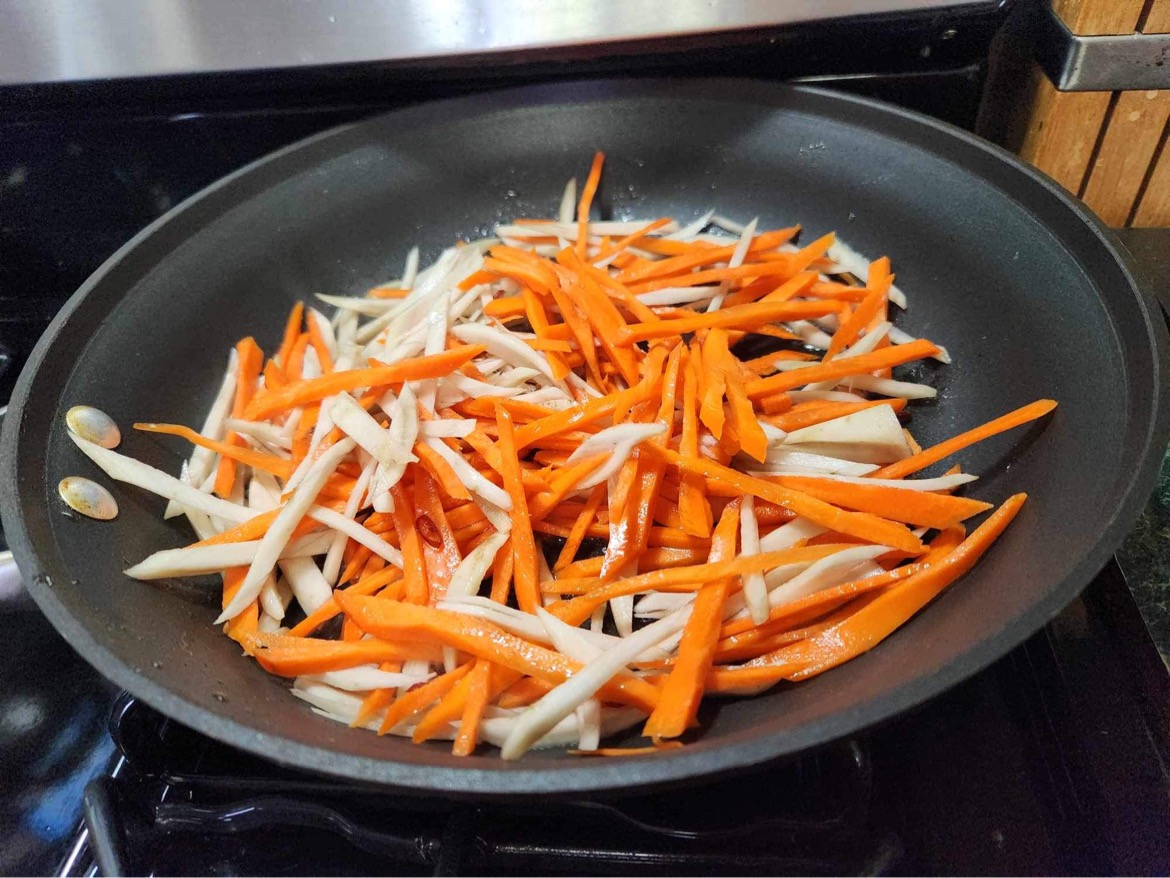
- Add 50 ml water and sauce A, and fry until there’s no more water. Season to taste.

- Remove to a plate or a bowl, add white sesame, and cool.
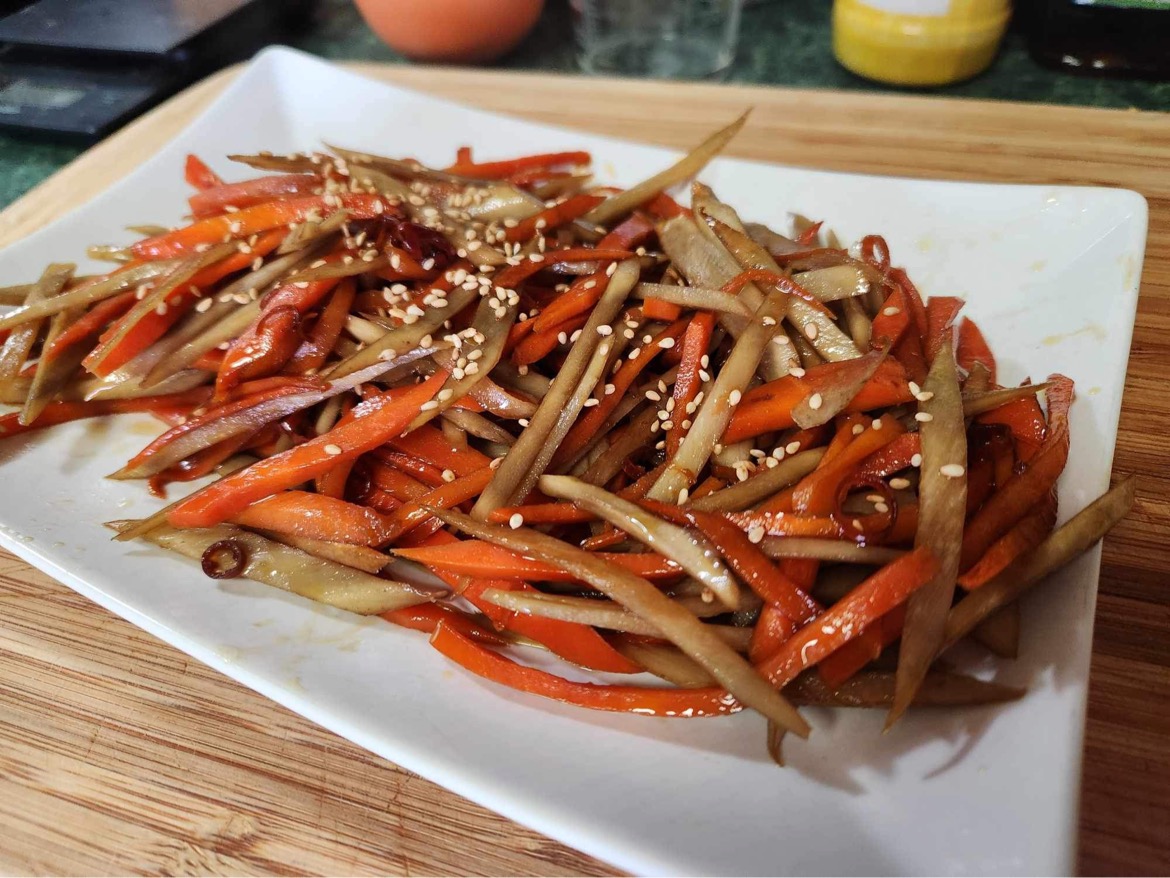
notes
Credits to https://cookpad.com/recipe/2945899, originally written in Japanese with a minor adjustment (more carrots).
Vegan Kyoto-style ozouni (mochi soup)
serves 2
Part of vegan osechi 2024.
ingredients
- 2 marumochi (circle mochi)
- 75g sweet white miso
- 500ml vegan dashi (500ml kombu)
- 2tbsp vegan dashi (1tbsp shiitake, optional)
- 1 large or 2 small taro
- 2cm daikon, sliced 5mm thick, and cut into quarter slices
- 4 nejiriume carrots
- handful of mizuna, or spinach
- some mituba, or microgreen shoots
- yuzu, or lime
steps
- Pre-cook taro in boiling water until soft (if you made chikuzen’ni you pick a few taros out and rinse).
- Make thin strips of yuzu or lime peel.
- Carefully pre-cook carrots in boiling water, about 4 minutes.
- Parboil mizuna or spinach quickly, cut in half and tie into a knot.

- In a pot, put kombu broth and daikon, and cook until translucent.
- In a bowl, add sweet white miso, ladle of kombu dashi, and 1 tbsp of shiitake dashi, and mix well.
- Add the miso mixture into the pot, and simmer for 5 min.
- Grill circle mochi, about 5 min.
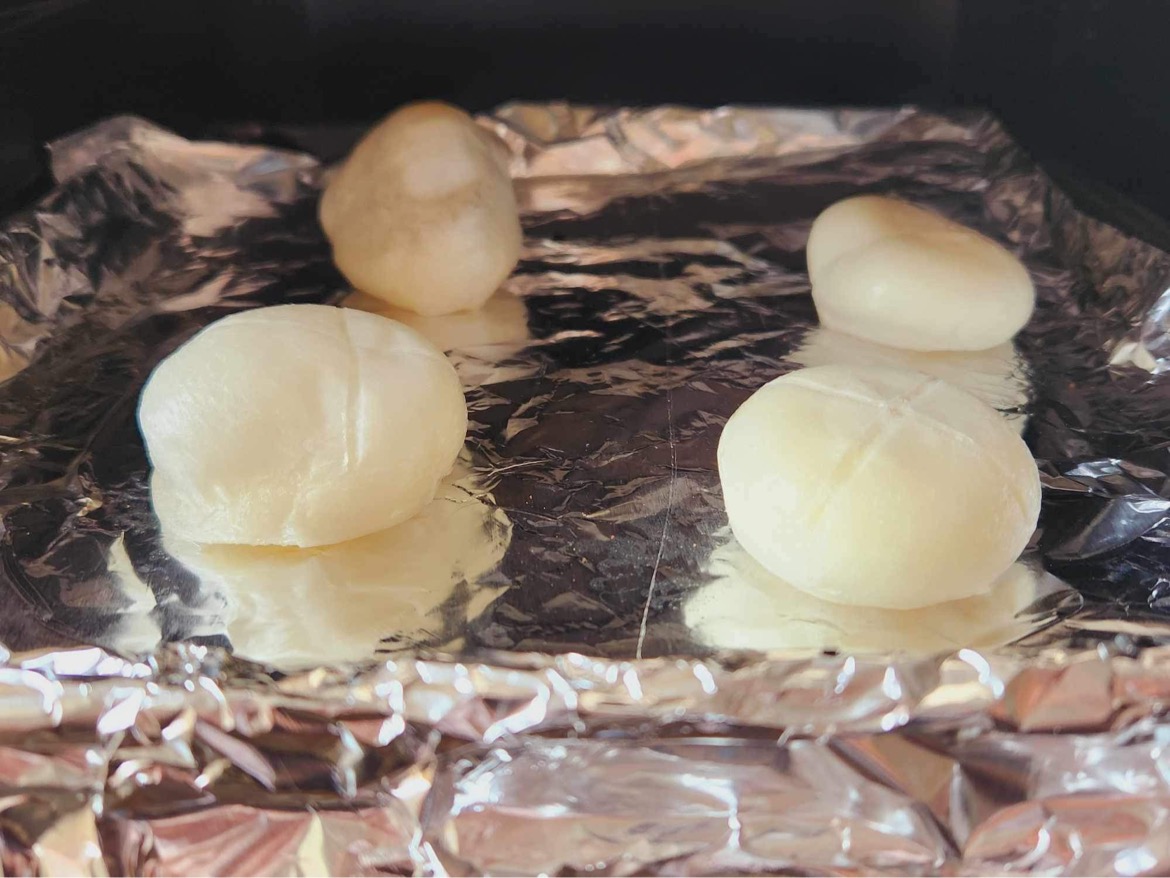
- Plate mochi and daikon in a bowl, pour the soup, then add mizuna, taro, carrots, yuzu, and mitsuba.
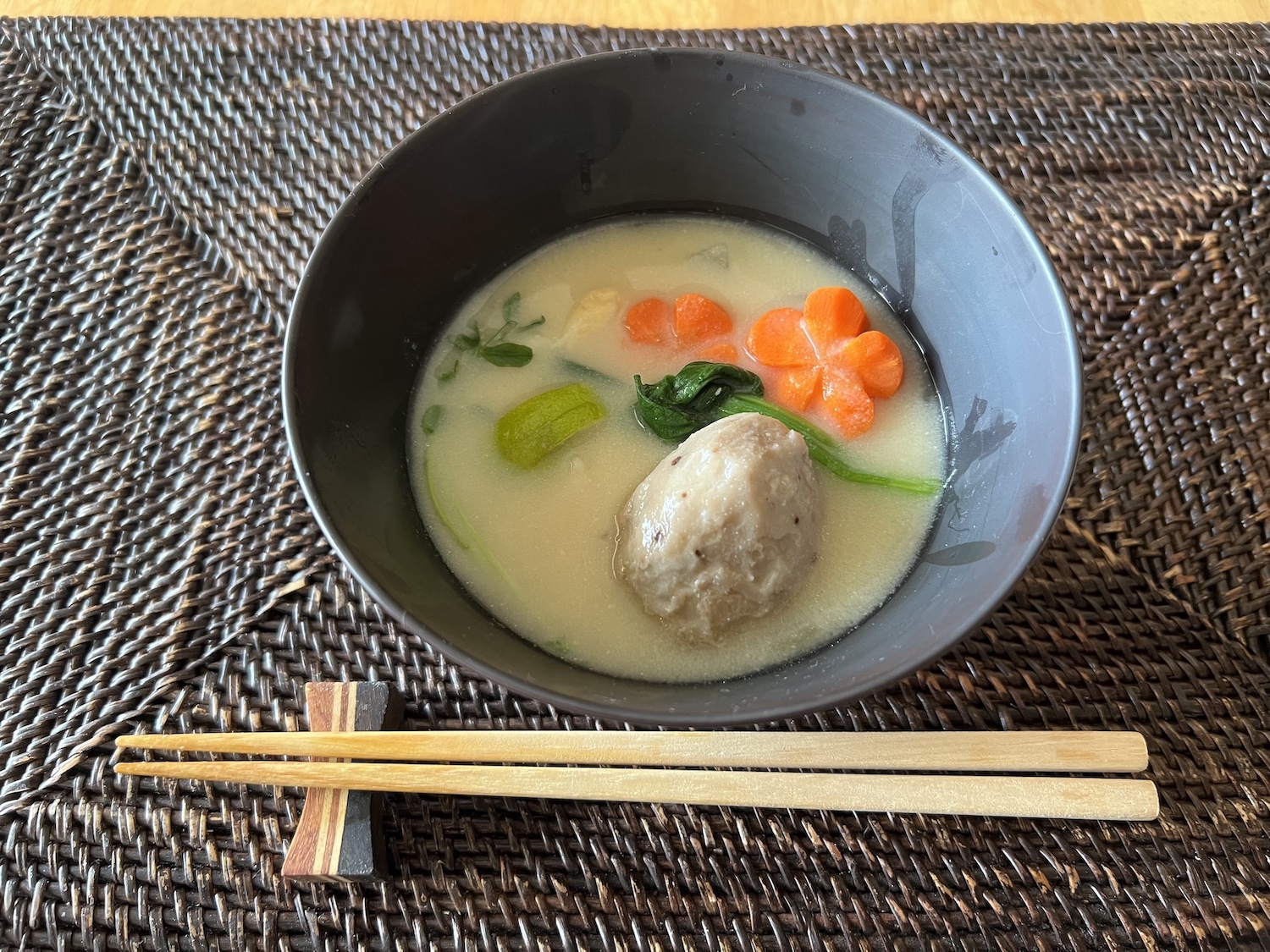
Vegan chikuzen’ni
Part of vegan osechi 2024.
ingredients
- ¼ daikon
- 1 carrot, cut into nejiriume
- 1 lotus root
- 1 burdock
- 1 taro
- 6 dried shiitake
- 1 konnyaku
- 12 snow peas
- canola oil
Soup A
- 100ml vegan dashi (100ml kombu)
- 100ml vegan dashi (100ml shiitake), made 1 day ahead
- 2 tbsp sugar
- 2 tbsp sake
Sauce B
- 3 tbsp soy sauce
- 2 tbsp mirin
steps
- Take out 6 rehydrated shiitake from shiitake dashi. Otherwise, heat dried shiitake with 250ml of water for 3 min in a microwave. Do not discard the water. Remove the stems once rehydrated, and slice into strips.
- Peel daikon and yam. Scrape skin off of burdock. Chop them into bite size pieces. Soak them into water separately.
- Cut konnyaku crosswise into 7mm thick strips. Then make an incision along the midline leaving 7mm on the top and bottom of the strip. Take one end, and gently push it through the hole to make a twisted konnyaku.
- Put konnyaku into a metal bowl, and pour boiling water. Take it out after a minute.
- Cover a dutch oven or a wok with neutral oil, like canola oil. Wipe off excess.
- Stir fry root vegetables, shiitake, and konkyaku with low heat for 5 minutes.
- Add Soup A, increase heat to bring to boil, and then simmer (low heat) with lid for 30 minutes, or until taro is softened.
- Parboil snowpeas separately, 2 minutes.
- Add Sauce B, bring to the boil again, and simmer with lid for 10 more minutes.
- Open the lid, increase the heat to medium, and fry till the broth is cooked away. Stir to avoid burning.
- Using chop sticks (or kitchen tweezers), take out carrots, konnyaku, and shiitake from the stew separately, rinse off the taro in a metal bowl with cold water, pad dry and store separately refrigerated.
- Serve in a large bowl, root vegetable on the bottom, and shiitake, konnyaku, carrots, and snowpeas on top.
